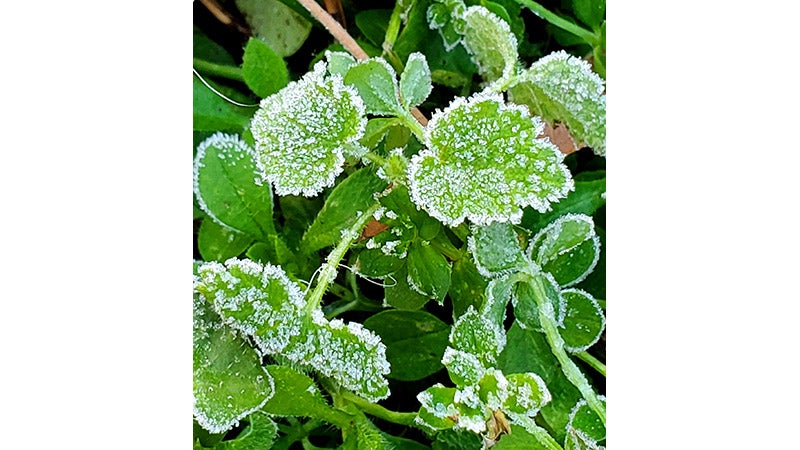It’s never too late for a walk in the woods
Published 6:00 am Friday, December 11, 2020
|
Getting your Trinity Audio player ready...
|
It’s the first week in December, and the weather is still pleasantly warm.
Even so, I’m surprised at the number of plants that are blooming, especially in protected nooks and crannies. Bushy St. John’s wort isn’t blooming, but still has flame-colored leaves and interesting seed pods. Spiderwort (Tradescantia virginiana) continues to produce deep purplish blue flowers. It’s the native plant that I love to hate because it’s indestructible and pops up all over my garden. I fully expect it to poke through the first snow of the season.
And then there are the weedy non-natives that typically appear during the first warm days in January and February. When the first tiny blue flowers of ivy-leaved speedwell (Veronica hederifolia) appear, I’m elated to see them — color, flowers, signs of life. By the time May arrives, however, and this plant has invaded my flower beds, I’m not so happy with it. Yesterday morning I was fascinated by the frost on the leaves and the solitary blue flower that I found. So it goes.
Ivy-leaved speedwell is a non-native member of the Speedwell Family that is originally from Eurasia. It’s an annual with a hairy reddish-to-green central stem that branches near the base. This plant sprawls and only grows 2 to 6 inches tall. The leaves are shallowly divided into three to five lobes; they’re hairy and have a succulent-like texture. The small, solitary blue flowers look like little jewels. Each one has four spreading lobes and two stamens with white anthers. The corolla has delicate veins. Unfortunately, this plant spreads by aggressively reseeding and is considered moderately invasive. There’s a reason, you see, why I’ll hate it by May.
The other weedy non-native plant that’s still blooming is henbit (Lamium amplexicaule), a non-native member of the mint family that is originally from Europe, Asia, and Africa. It may well have arrived here with early settlers. The common name henbit came about because chickens like to eat it. Henbit grows in disturbed areas where it spreads by reseeding. A single plant can produce more than 2,000 seeds. No wonder it’s so difficult to eradicate from the garden.
Henbit has a long history of use in traditional medicine as an astringent, diuretic, and purgative. It also has anti-inflammatory and antibacterial qualities. And it’s edible, both raw in salads and cooked in soups. It apparently tastes somewhat like kale. Perhaps the best revenge on this weedy nuisance is to eat it.
There’s never a bad time to take a walk in the woods. There’s always something interesting to be found — liverworts, fungi, moss, offseason plants, and insects. And there are skunk cabbages. I bet if I wander around Holliday State Park, I’ll find that there are a few early risers. It’s not clear to me whether they’re the last plant to bloom or the first of the new season, but they’re amazing.
Happy holidays. Take some time from all the hustle and bustle to commune with nature and enjoy the beauty all around. Look for some skunk cabbages. I promise you’ll find some.
DR. CYNTHIA WOOD is a master gardener who writes two columns for The Herald. Her email address is cynthia.crewe23930@gmail.com.






